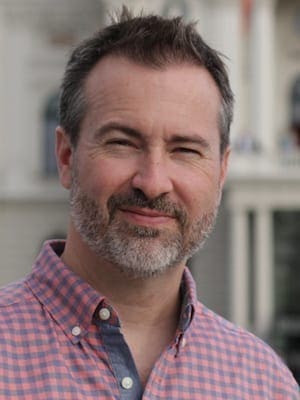Our news – with regard to immigrants, migrants and refugees – has me thinking often about my direct experience with the U.S.-Mexico border.
It was January 2011, and I was working on the EthicsDaily.com documentary “Gospel Without Borders” – a look at faith and immigration.
The documentary would eventually include stories in: Iowa (about the rebuilding and revitalization of a church by immigrants); Alabama (about a woman whose daughter was killed by an undocumented and drunk driver); North Carolina (about a father of five facing deportation); Arkansas (about the largely Catholic immigrant population served by, among others, the Bishop of Little Rock); and Arizona (about the work of pastors trying to prevent more deaths of people crossing the border in the desert).
When I think about any of my documentary production trips, that visit to the border stands out.
To be clear, I’m mindful of the limited perspective that comes from a single visit of a couple of days. Having said that, no experience, no matter how long, is all-encompassing.
What I’m left with is a collection of moments, impressions and interactions that must be interpreted and contextualized by other data sets and pieces of evidence.
Here is what has stuck with me, in no particular order:
The desert. So beautiful and yet so deadly. I went into it a U.S. citizen, well fed with a gassed-up Jeep.
My relative comfort contrasted with the knowledge that a teenage girl’s body had been found recently. She was trying to cross the desert and had succumbed to the elements.
The trails. Co-producer Robert Parham and I were traveling with guides along the “death trails” – routes through the desert connecting Mexico and the United States. The trails went through all types of terrain; I remember the steep canyons the most.
The shrine. In one such canyon, those crossing the desert had turned a natural rock formation into a shrine of sorts. They left candles, rosaries, prayer cards, crucifixes. I was and am moved still by these tangible expressions of faith amid danger and uncertainty.
The aid. At the foot of the shrine were water jugs and cans of food left there by No More Deaths – our guides who routinely offered such aid in an effort to prevent more deaths.
The church. Accompanying us were John Fife and Gene Lefebvre, Presbyterian pastors from No More Deaths, and Miguel De La Torre, professor at Iliff School of Theology.
Miguel shouted as we moved along the trails: “Somos de la iglesia. No tengas miedo.” That is: “We are from the church. Don’t be afraid.” I have reflected often on how those simple phrases crystalized, for me, the church at its best: helping, combatting fear.
The agent. I remember watching – and filming – a Border Patrol agent take a migrant into custody. I marveled then and now at how it was “just another day” for the agent doing his job, but witnessing this point of contact between agent and Mexican teenager was a unique experience for me. It quickly personalized a large issue.
The border. I was admitted into Mexico by a nonchalant wave from a distant Mexican official. Coming back into the States was considerably more complicated – but still easy for me – with my passport. And we encountered another security checkpoint several miles into the interior of the States – guard towers, police dogs, vehicular inspections.
The lost. We encountered one person on the trails. He actually wandered into the No More Deaths base camp nestled among those trails. He said his name was Juan and that he was 17 and lost. He had gotten separated from his fellow travelers and hurt his knee. He was exhausted, and he asked us to call Border Patrol. We did.
I’ve thought about Juan more times than I can remember. Sometimes I see his face in the countenance of other migrants and immigrants. Sometimes I see his face when I look at my own son.
“Somos de la iglesia. No tengas miedo.”
Cliff Vaughn is media producer for EthicsDaily.com.
Editor’s note: This article is part of a series on local churches / Christian organizations and immigration.
Previous articles in the series are:
Catholic, Evangelical, Mainline Protestant Leaders Endorse BRIDGE Act
Haitians, Others Arrive in Tijuana Seeking Entrance into U.S.

